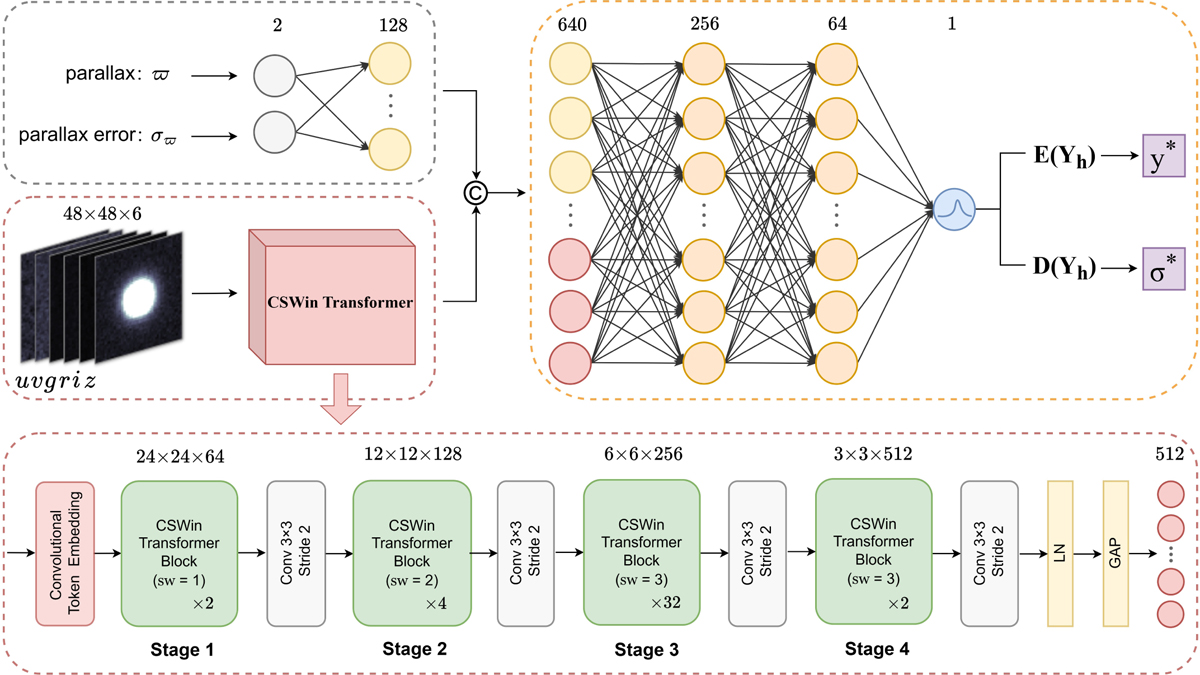Fig. 7

Download original image
Architecture of the Atmospheric CSWin Framework used for regression tasks. The framework employed a dual-input architecture to process both astrometric and photometric data. The astrometric branch (top left, gray frame) took parallaxes and their associated errors as input. These parameters were jointly encoded through a 128-dimensional fully connected layer. In parallel, the photometric branch (middle left, pink frame) processed six-band (u, v, g, r, i, and z) images with dimensions 48 × 48 × 6. These images were fed into a CSWin Transformer backbone network (bottom, pink frame), which performed hierarchical feature extraction across four progressive stages. Each stage contained multiple CSWin Transformer blocks, which captured both local and global spatial information through CSWin-Attention mechanism. Through this process, the backbone generated a 512-dimensional visual feature representation. The framework then combined these complementary representations through concatenation (denoted by ©) to form a 640-dimensional composite feature vector. This fused feature vector served as input to the prediction module (top right, orange frame), which consisted of three fully connected layers incorporating MC dropout. The expected value of multiple sampled outputs from the prediction module, denoted as E(Yh), served as the model’s prediction y* (i.e., Teff, log g, or [Fe/H]). The variance of these sampled outputs, denoted as D(Yh), was used to assess the uncertainty σ* of the model’s prediction.
Current usage metrics show cumulative count of Article Views (full-text article views including HTML views, PDF and ePub downloads, according to the available data) and Abstracts Views on Vision4Press platform.
Data correspond to usage on the plateform after 2015. The current usage metrics is available 48-96 hours after online publication and is updated daily on week days.
Initial download of the metrics may take a while.


